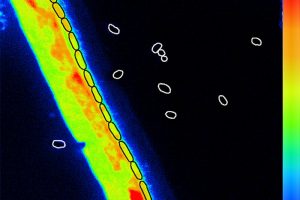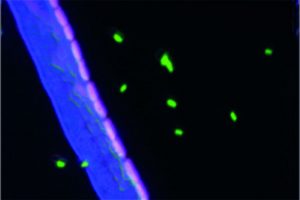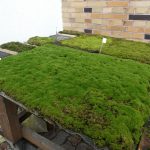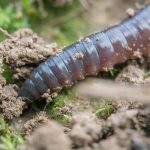Microbial activity in dry soils: Fungi awake bacteria from their slumber

When a soil dries out, this has a negative impact on the activity of soil bacteria. Using an innovative combination of state-of-the-art analysis and imaging techniques, researchers at UFZ have now discovered that fungi increase the activity of bacteria in dry and nutrient-poor habitats by supplying them with water and nutrients. The ability of fungi to regulate drought stress in soil and thus sustain ecosystem functions is an important insight in the context of climate change.
Many fungi spread through the soil with a fine network of thin filaments known as hyphae. In their search for water and nutrients the hyphae grow in different directions, constantly enlarging the network. Once found, water and nutrients are absorbed and transported through the hyphae, allowing them to be supplied to parts of the fungal network in dry or nutrient-poor areas of the soil. But it isn’t only the fungus itself which benefits from the transport of material through the hyphal pipelines: bacteria, too, are kept supplied with the water and nutrients they need to thrive. This has now been demonstrated by a team of UFZ researchers in a study recently published in the journal Nature Communications. „We’ve suspected for a long time that fungi play an important role in the soil moisture budget,“ says UFZ environmental biotechnologist Prof. Matthias Kästner. „Now, using secondary ion mass spectrometry techniques (NanoSIMS and ToF-SIMS) from the ProVIS research platform at UFZ, we’ve finally obtained experimental evidence.“
As part of their investigations, the researchers closely examined the transport of water, substrates and nutrients through the microscopically small hyphae of fungi. They grew the fungi on a culture medium of water, glucose and nitrogen-containing nutrients. The fungal hyphae had to pass through a dry, nutrient-free zone in order to grow through into a new area containing the culture medium. The inhospitable transition zone contained spores of the common soil bacterium Bacillus subtilis. Spores are inactive stages of Bacillus that form when there is insufficient water, food and nutrients available for bacterial growth. The bacteria go into a kind of dormant stage, from which they only awake once the environmental conditions are more favourable for living again.

In the experiment, these conditions were indeed improved by the growth of the fungi: „As the fungal hyphae grew through the dry zone, the bacterial spores germinated and we noticed clear microbial activity,“ says UFZ environmental microbiologist Dr. Lukas Y. Wick. „The fungi obviously improved the environmental conditions for the bacteria and woke them from their slumber, like Sleeping Beauty.“ But what exactly happens at a chemical level when fungal hyphae grow in direct proximity to bacterial spores? To answer this question, the researchers ‚labelled’ the water, glucose and nitrogen-containing nutrients in the culture medium in advance with stable isotopes. If these substances were transferred from the fungus to the bacteria, they could be detected using the isotopic marker and the NanoSIMS method, with nano-scale spatial resolution. „The NanoSIMS method reveals the distribution of elements and isotops and therefore allows us to observe metabolic processes,“ Kästner explains. „As it turns out, we did find the stable isotopes of the labelled water, glucose and nitrogen-containing nutrients in the cell mass of the bacteria – which could only have come from the fungi.“
This study has given the UFZ researchers another important insight into fungi and their important function in soils. Fungi serve as pumping stations and pipelines for water, substrates and nutrients and can colonise inhospitable locations, making them habitable for bacteria – and thus stimulate microbial activity in the soil. In previous work the researchers have already shown that fungal hyphae act as a kind of fungal highway for bacteria, allowing them to move around, and provide a hotspot for bacterial gene transfer. Wick continues: „The results of this latest study demonstrate once again that, through their interaction with bacteria, fungi play a significant, previously underestimated role in the soil ecosystem.“
If a soil is contaminated with pollutants, for example, bacteria can break them down. But if the soil is too dry, the degradation processes will come to a standstill. „If the drought period lasts for a limited time, fungi have a stabilising effect and can keep soil processes going. This could be important specifically with regard to the impacts of climate change, if the ratio of dry to moist areas of soil dramatically increases,“ says Kästner. In future investigations, the researchers therefore intend to look even more closely at soil as a true ecosystem. „We want to carry out soil experiments under different environmental conditions and find out what influence fungal growth has on the breakdown of pollutants,“ says Wick. He adds: „It’s important to have a better understanding of the role of fungi in the soil ecosystem. Only when we know how soil works can we respond to changes, for example those caused by climate change, with informed decisions.“
Source: Helmholtz Centre for Environmental Research – UFZ





Schreibe einen Kommentar